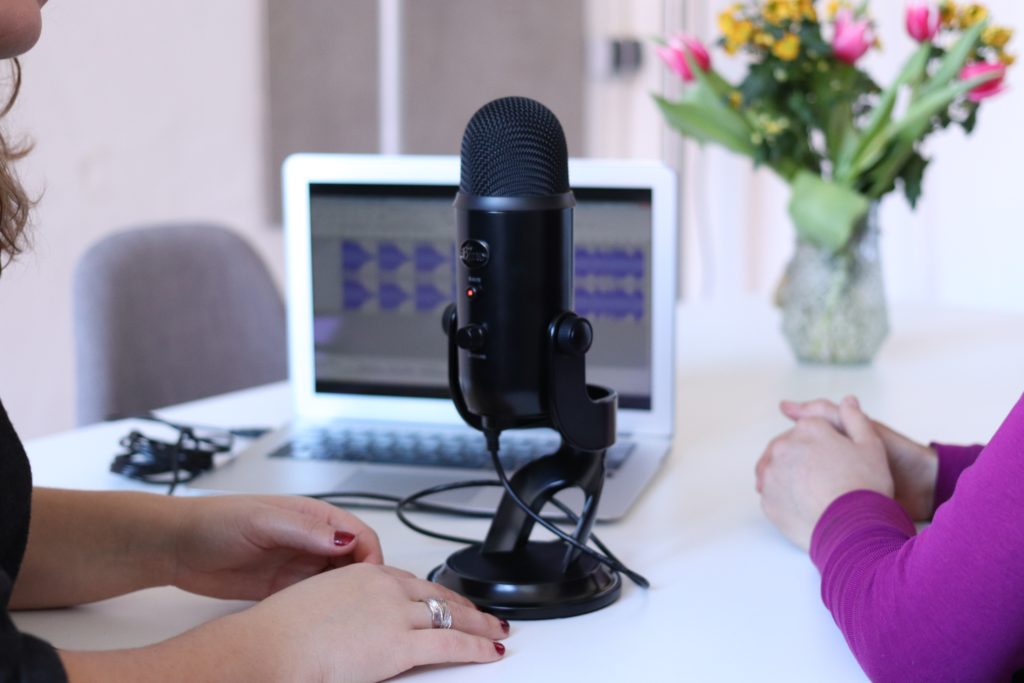Are you curious about how to better understand your podcast audience? Look no further than the world of podcast analytics. By utilizing the tools and data provided by podcast analytics, you can gain valuable insights into your listeners, their preferences, and their behavior. Whether it’s analyzing listener demographics, tracking episode downloads, or measuring engagement levels, podcast analytics can provide you with the information you need to make informed decisions about your podcast’s content and marketing strategies. With a wide range of podcast analytics tools and software available, you can easily track and analyze key metrics to help you optimize your podcast and connect with your audience in a more meaningful way. So, let’s dive into the world of podcast analytics and discover how it can help you understand your audience on a whole new level.

Understanding the Importance of Podcast Analytics
Podcasting has become an increasingly popular medium for content creators and businesses alike. It provides a unique platform to engage with a targeted audience and share valuable information or entertainment. However, without proper insights into your audience’s preferences and behaviors, it can be challenging to create content that resonates and grows your podcast’s reach. This is where podcast analytics come in.
The role of analytics in enhancing podcast performance
Analytics in podcasting refer to the collection and analysis of data related to audience demographics, listening behaviors, and engagement metrics. These insights allow podcasters to make informed decisions about content strategy, marketing, and promotion. By understanding who your audience is, how they consume your content, and how engaged they are, you can tailor your podcasts to meet their preferences and needs effectively.
Benefits of utilizing podcast analytics
Utilizing podcast analytics offers several benefits to content creators. Firstly, it provides valuable insights into your audience demographics, helping you understand who is listening to your podcasts. This information can be used to refine your target audience and create more tailored content that resonates with them.
Secondly, podcast analytics allow you to analyze listener behavior, such as the average listening duration, episode popularity, and drop-off rates. This knowledge helps you identify patterns and trends, enabling you to optimize your content to keep listeners engaged and coming back for more.
Finally, podcast analytics provide metrics on audience engagement, including social media shares, comments, and reviews. Understanding how your audience interacts with your podcast allows you to gauge the effectiveness of your content and make adjustments accordingly. It also helps you identify loyal fans who can become brand ambassadors and help promote your podcast further.
Overview of Different Podcast Analytics Platforms
Introduction to podcast analytics tools
Several podcast analytics platforms offer comprehensive data tracking and analysis solutions. These tools are designed to help podcasters gather meaningful insights into their audience and optimize their content strategy. Some popular podcast analytics platforms include:
-
Podtrac: Podtrac provides a range of analytics, including unique downloads, audience demographics, and engagement metrics. It also offers industry benchmarks to help you compare your podcast’s performance with similar shows.
-
Chartable: Chartable offers advanced analytics, including real-time data on episode downloads, subscriber growth, and listener engagement. It also provides tools for tracking and analyzing your podcast’s rankings on various podcast charts.
-
Libsyn: Libsyn is a podcast hosting platform that also offers analytics services. It provides detailed audience data, including geographic location, listening devices, and user agents. Libsyn also integrates with other podcasting tools, making it a convenient all-in-one solution.
Features and benefits of various podcast analytics platforms
Each podcast analytics platform offers specific features and benefits that cater to different podcasters’ needs. Some common features you can expect from these platforms include:
-
Demographic Insights: Most analytics platforms provide audience demographic data, including age, gender, and location. This information helps you understand who your listeners are and tailor your content to their interests and preferences.
-
Engagement Metrics: Podcast analytics platforms allow you to track engagement metrics such as episode downloads, listens, and subscriber growth. These metrics help you understand the popularity of your episodes and identify areas that need improvement.
-
Listener Behavior Analysis: Podcast analytics tools provide data on listener behavior, such as average listening time, drop-off rates, and episode popularity. This information helps you optimize your content strategy and create episodes that keep listeners engaged.
-
Industry Benchmarks: Some analytics platforms offer industry benchmarks that allow you to compare your podcast’s performance with similar shows. This data can help you understand how you’re doing relative to your competition and identify areas for improvement.
Choosing the right podcast analytics platform depends on your specific needs and budget. It’s essential to evaluate the features and benefits of each platform to determine which one aligns best with your goals and preferences.

Understanding Podcast Audience Demographics
Ways to gather demographic data
Understanding your podcast audience’s demographics is crucial for creating content that resonates with them. Here are a few ways to gather demographic data:
-
Listener Surveys: Conducting listener surveys is an effective way to gather demographic information directly from your audience. You can create simple online surveys using tools like Google Forms or SurveyMonkey and share them through your podcast episodes, social media channels, or website.
-
Analyze Listener Data: Podcast analytics platforms provide valuable insights into your audience’s demographics. They can provide information on age, gender, location, and even interests, based on listening behavior. Utilize these analytics tools to gain a better understanding of your audience’s demographics.
-
Social Media Insights: Analyzing your podcast’s social media followers can also provide insights into your audience’s demographics. Platforms like Facebook and Twitter provide audience insights that include age, gender, and location data.
Interpreting and utilizing demographic data
Once you have gathered demographic data about your podcast audience, it’s essential to interpret and utilize this information effectively. Here are some tips on how to do that:
-
Targeted Content Creation: Use the demographic data to create targeted content that appeals to your audience’s interests and preferences. For example, if your podcast caters to young entrepreneurs, you can create episodes focused on startup advice and success stories.
-
Guest Selection: Understanding your audience’s demographics can help you choose guest speakers that resonate with them. Look for guests that align with your listeners’ interests and bring valuable insights to your podcast.
-
Marketing and Promotion: Utilize the demographic data to tailor your marketing and promotion strategies. For example, if your audience is predominantly based in a specific region, you can target local advertising or events to attract more listeners.
By utilizing demographic data effectively, you can create content that speaks directly to your audience and build a loyal listener base.
Interpreting Podcast Listening Behaviors
Analyzing listener behavior through podcast metrics
Listening behavior metrics provide valuable insights into how your audience consumes your podcast. Analyzing these metrics can help you identify patterns and trends that shape your content strategy. Here are some key podcast metrics to consider:
-
Average Listening Duration: This metric tells you how long, on average, your listeners listen to your episodes. A high average listening duration indicates that your content is engaging and holds your audience’s attention.
-
Drop-off Rates: Drop-off rates reflect the percentage of listeners who stop listening to an episode before reaching the end. Analyzing drop-off rates can help you identify sections of your episodes that may be less engaging or need improvement.
-
Episode Popularity: Understanding which episodes resonate most with your audience can guide your content creation efforts. Analyze the download and listen rates for each episode to identify topics or guests that generate higher levels of engagement.
-
Listening Platform Preferences: Tracking the platforms your audience uses to listen to your podcast can provide insights into their preferred listening experiences. This information can help you optimize your episodes for specific platforms or even consider launching on new platforms where your audience is active.
The significance of listening behaviors in shaping podcast content and marketing
Analyzing listener behavior is crucial for shaping your podcast’s content and marketing strategies. By understanding how your audience engages with your episodes, you can make informed decisions to improve your offerings. Here’s how listening behaviors impact content and marketing:
-
Content Optimization: Analyzing listening behaviors allows you to identify areas of improvement in your episodes. If you notice high drop-off rates at specific segments, you can work on making those parts more engaging or concise. Similarly, if certain topics or guests generate higher engagement, you can create more content around those areas.
-
Tailored Marketing: Understanding your audience’s preferred listening platforms can guide your marketing efforts. If your audience primarily listens on Spotify, for example, you can focus your promotional activities on that platform to reach more potential listeners. Additionally, you can leverage listener feedback in reviews and comments for marketing purposes, highlighting the aspects that resonate most with your audience.
By analyzing your podcast’s listening behaviors, you gain valuable insights to improve both your content and marketing strategies, ultimately leading to a more engaged and loyal audience.

